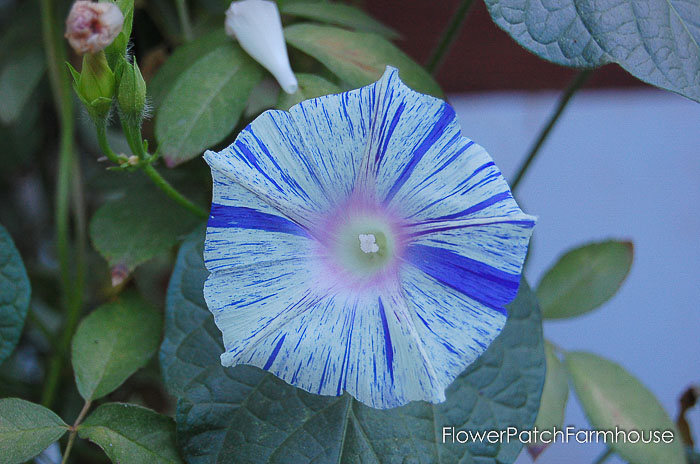


Surround your precious plants in a circlet of Diatomaceous earth/coarse sand/broken egg shells.

Pick them off by hand and throw them into a bucket of soapy water. Go out into your garden at night with a torchlight.You can control slug populations in your garden if you apply a combination of the below methods. Ways to get rid of slugs/snails on Morning Glories Slugs not only devour the foliage, but they also feed on the flowers and buds. If you see slimy trails and punctured leaves, you can confirm their presence. Slimy trails are the primary signs of their presence. Snails and slugs leave behind a slimy trail as they go through your garden. These pests attack your precious vines at night. Yes, snails and slugs can devour the entire Morning Glory vines. Plant them where you can see the flowers as you come and go every morning, they'll be there for you.3.7 Do Birds eat Morning Glory flowers? Do Snails/Slugs eat Morning Glories? The hard seed coating may be nicked with nail clippers or soaked overnight (but no longer than eight hours) before planting to encourage germination, but, above all, these pretty summer vines need warm weather, so wait until all danger of frost has passed and the soil begins to warm up, and then plant the seeds grow and water well. Giant white moonflowers are also in the morning glory family they're perfect for commuters who might get home too late to watch the early show of morning glories: moonflowers bloom in the evening, with large, luminous white flowers.Īll morning glories, including moonflowers, thrive in sunny spots, tolerate drought, and are not bothered by pests. 'Cotton Candy' has ruffled, double pink flowers, with vines that only grow to about six feet. 'Grandpa Ott' produces velvety purple blooms early and keeps blooming all summer long. 'Carnevale di Venezia' has marvelously striped blooms. 'Heavenly Blue' is the classic and most popular morning glory, but pink, white, purple, and red morning glories are also available.

Morning glories are such eager climbers that you can train them to grow up a string in the course of a summer, the vines will obscure a chain-link fence. The vines only look delicate: they take hold easily, require little training, and hold fast to their support all summer long. They are twining plants, allowing them to climb trellises, arbors, garden obelisks, or tepees made of tomato stakes. "There is an emotional attachment."Īt the Chicago Botanic Garden, morning glories flourish in the English walled garden. "People feel affectionately about some plants, and morning glories are one of them," says Lisa Hilgenberg, a horticulturist at Chicago Botanic Garden. Plant morning glories with a child and you have cultivated a gardener for life. They only last for a day, but you will not miss the ones that fade, because a morning glory vine will produce more blooms than you can ever count. Their unfailingly cheerful flowers open fresh every morning. They thrive in hot weather and in sunny spots, and bloom prolifically through the summer. Morning glories are vigorous annual vines with beautiful trumpet-shaped flowers. Once you grow morning glories, you'll always have a special place for them: in your heart.


 0 kommentar(er)
0 kommentar(er)
